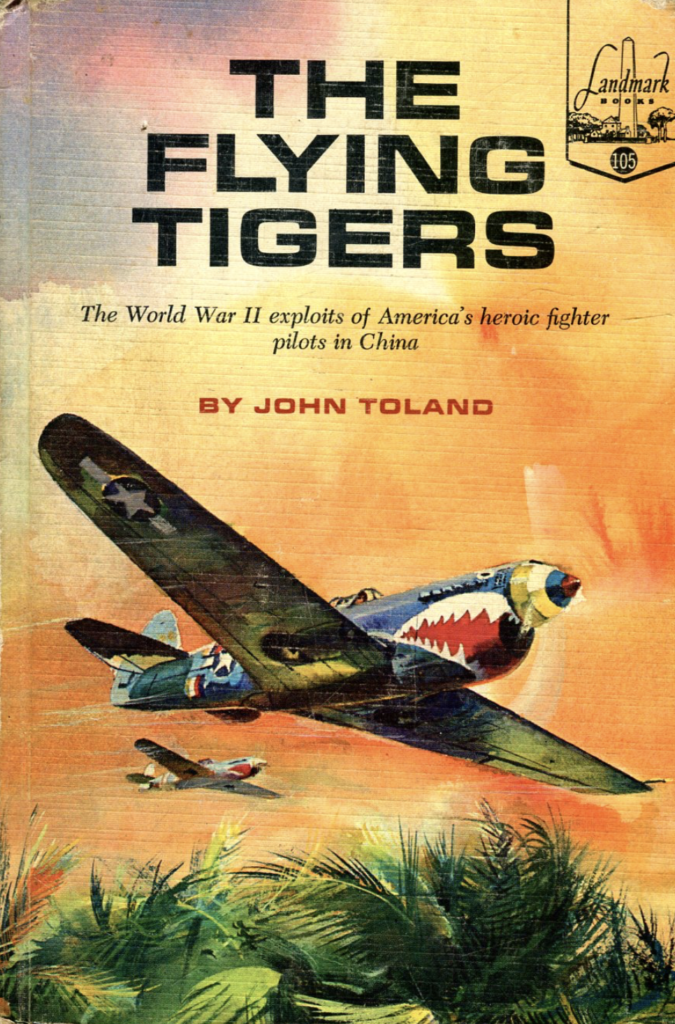A Plumfield Kids Book Review by Jack Masarik, age 11
Listen Now:
The Flying Tigers by John Toland is a Landmark book about a group of American fighter pilots led by and trained by Claire Lee Chennault—who was a former United States Air Corps acrobatic flier and flying school director. In 1937, after ten years of service, he resigned from his captaincy to become a colonel and the leading ace in the Chinese air force—he specially trained The Tigers to fight with inferior planes fighting superior planes. However, with “bad planes,” The Flying Tigers won most of the time against drastically superior numbers.

This book surprised me for two reasons. The first one is that I thought it would be like the other Landmark Books or the Signature Book, but it wasn’t. This is why it surprised me, because three-quarters of the book is about air battles. The second reason is the drastic numbers that attacked them and lost; for example, there were 180 bombers and 120 fighters, altogether 300 planes. These Japanese planes were attacking about 10 to 20 Flying Tigers. The Flying Tigers destroyed the Japanese planes and protected the Rangoon docks so that 700 tons of equipment could reach the Chinese army.
The Flying Tigers started when Claire Lee Chennault came to the United States for help. The Japanese had made a new airplane called the Zero. They were using this plane to attack the Chinese. The Chinese used the standard fighter, the P-40, which was less maneuverable than the Zero. The Zero could make turns much faster than the P-40. The two planes would dogfight, but the P-40 would be destroyed because the Zero would make a turn, and as the P-40 followed the Zero, the Zero would attack and destroy the P-40.
There were two chinks in the Zero’s armor; the first was its armor. The Zero’s armor was not as good as the P-40s, making it lighter than the P-40. That brings us to the second problem with the Zero: it was too light, which made it harder to dive. Unlike the P-40, whose armor was better and made it heavier, it dived better and faster than its enemy. Chennault used this to his advantage by proposing to the U.S. that he would train pilots to fly differently than they were originally trained. After long debating, the U.S. sent planes and pilots to China. The US agreed to send bombers, but they didn’t actually do it untill about three-quarters of the way through the book.
Early in the book, we hear about the training of the Tigers. When training, they didn’t have to wear uniforms; they could wear whatever they wanted. Some wore overalls, others tank tops, and one, Tex Hill, wore shorts, a t-shirt, cowboy boots, and a ten-gallon hat. When they were done training for the day, the Tigers would go outside and play baseball. Even Chennault, their colonel, would play. It was said that when the pitcher would throw the ball too high or strike him out, Chennault would get mad and yell at the poor pitcher.
At one point in the book, the Japanese had almost conquered China. They just had to conquer a river, and then they would be at the core of China. The Flying Tigers were the last line of defense. If they failed, then China would most likely be conquered. The Flying Tigers won, but they did have some backup, that being the bombers the U.S. had promised, but they hadn’t sent till now. Instead of sending full-fledged bombers, they sent a new plane called the Kittyhawk. The Kittyhawk was a mixture of fighter and bomber. With the help of the Kittyhawk, the Flying Tigers decimated the enemy.
I love this book; it is my favorite Landmark Book, and the best history book I have ever read. I wish it weren’t out of print, because I think every WWII history buff, or anyone who wants to hear about The Flying Tigers should read it.
You can learn more about this book at Biblioguides. You can purchase this book as a used book from Amazon: The Flying Tigers. This book is available via Audible. You can check out our list of Landmark Books on Audible, here.